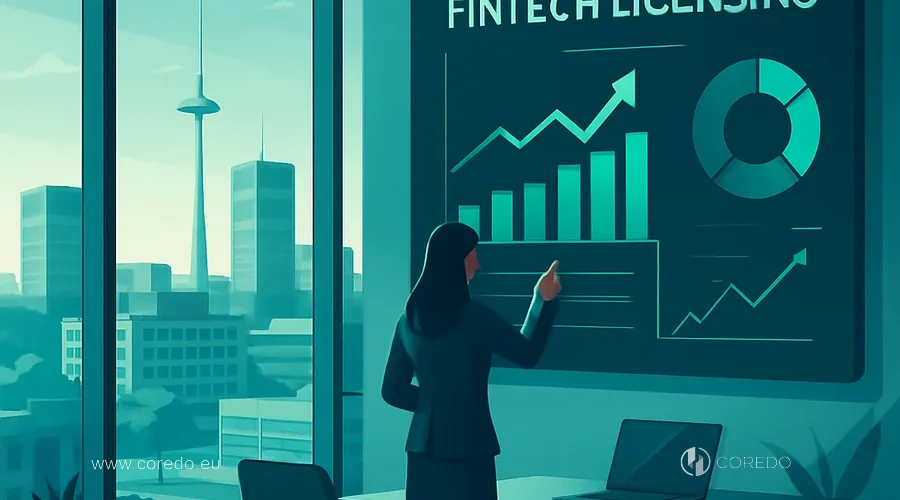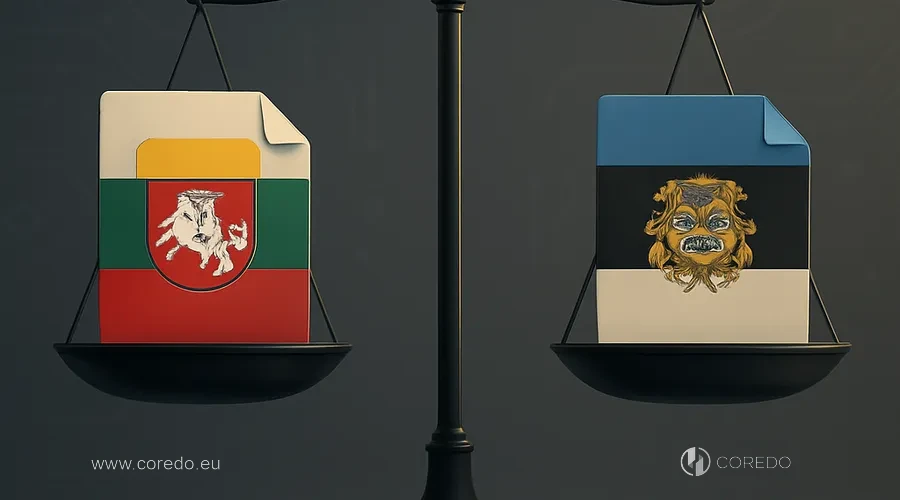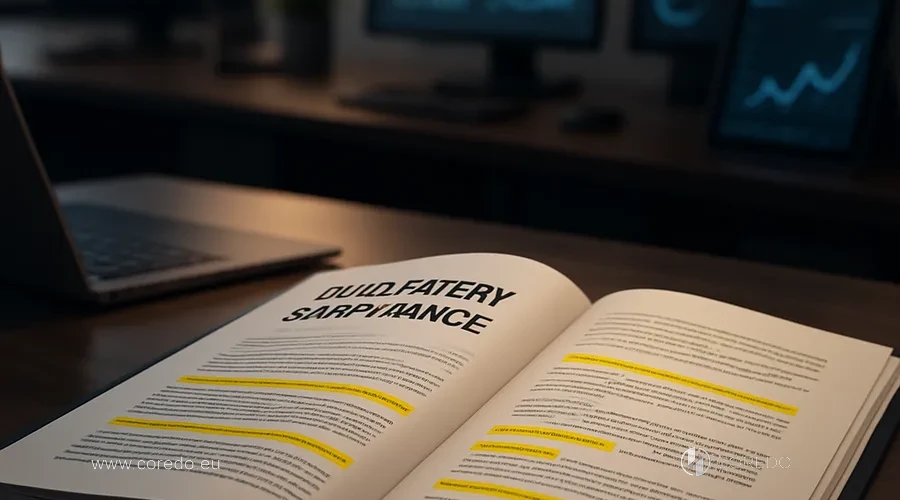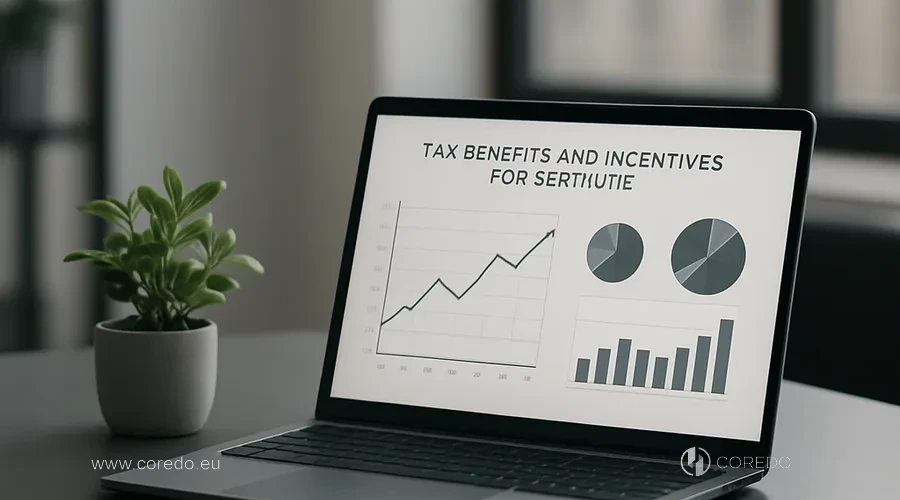In 2025 more than 70% of new European fintech companies choose Lithuania or Estonia to obtain an E-money license and launch international payment services. Why? Competition for speed to market and regulatory flexibility in the EU is reaching a historic high: in the context of tightening AML requirements and the implementation of MiCAR, the right choice of jurisdiction becomes not just a matter of savings: it is a strategic factor for the survival and scaling of the business. But where are the conditions for registering a fintech company and obtaining an EMI license truly optimal: in Lithuania or Estonia? How not to make the wrong choice between the “digital state” and the “fintech hub of Europe”?
I encounter this question every day: entrepreneurs, executives and investors expect not abstract comparisons but concrete, practice-tested solutions. That is why I invite you to go through this path together, from analyzing key parameters to strategic choice scenarios. In this article you will find not only an expert comparison of EMI vs PSP in the two leading EU jurisdictions, but also practical recommendations based on the experience of COREDO and current international standards. If you want to obtain an EMI license quickly, transparently and with minimal risks, read to the end: here you will find all the necessary information to make a well-informed decision.
Lithuania and Estonia, leaders in EU fintech licensing

Lithuania and Estonia have become real leaders in EU fintech licensing thanks to a combination of progressive regulation, fast procedures and support for innovation. These countries attract fintech companies from around the world by offering transparent conditions and access to the European market.
Lithuania as Europe’s fintech hub
Lithuania confidently holds leading positions in the number of issued EMI licenses and payment service licenses in the EU. Over the past five years the COREDO team has implemented more than 30 projects for registering fintech companies in Lithuania, and each time the high speed and transparency of procedures has been noted. The Bank of Lithuania has implemented a progressive regulatory framework fully compliant with EU directives, which allows rapid adaptation to new requirements, including PSD2 and MiCAR.
The state actively supports fintech startups: tax holidays are in effect, innovation funding programs, and special grants for R&D. Lithuania’s developed fintech ecosystem brings together banks, payment institutions, compliance providers and technology platforms, creating a favourable environment for scaling a business. COREDO’s experience confirms: for companies aiming for a rapid market entry into the EEA and cost optimisation, Lithuania is one of the most attractive options.
Estonia, digital technologies and leadership
Estonia: a global benchmark for digitalisation: 99% of financial transactions here are carried out online, and government services are available around the clock through a single digital portal. The e-residency program offers foreign entrepreneurs a unique opportunity to manage a business completely remotely, using a digital ID to sign documents, open accounts and integrate with global payment systems (PayPal, Stripe, virtual cards).
The Bank of Estonia has created a flexible regulatory sandbox that allows testing innovative fintech products in real conditions with minimal bureaucratic barriers. The solution developed at COREDO for one of its clients — a startup in the API payments field — allowed the service to be fully integrated with European banks and to complete all stages of licensing online within three months.
Comparison of EMI licenses: Lithuania and Estonia

EMI licenses in Lithuania and Estonia are two popular choices for fintech companies seeking access to the European payments market. Both jurisdictions offer key advantages for fintech development, but they differ in licensing timelines, capital requirements and regulatory conditions. Let’s review the main parameters of these two countries to understand which jurisdiction is better suited for your project.
How to obtain a license?
| Parameter | Lithuania | Estonia |
|---|---|---|
| EMI license | 6–9 months | 8–12 months |
| PSP license | 3–5 months | 4–6 months |
| Regulatory sandbox | Up to 6 months of testing | Up to 6 months of testing |
COREDO’s experience shows that Lithuania provides a faster licensing process thanks to optimized procedures at the Bank of Lithuania and a clear communication system with the regulator.
Minimum capital requirements
| Parameter | Lithuania | Estonia |
|---|---|---|
| Minimum EMI capital | €350,000 | €350,000 |
| cost of company registration | €265–€500 | €265 |
| Annual maintenance costs | €120–€730 | €120–€730 |
Cost of obtaining an EMI license
Lithuania:
- State fee: €500–€1,000
- Legal support: €3,000–€8,000
- Preparation of compliance documents: €2,000–€5,000
- Total cost: €5,500–€14,000
Estonia:
- State fee: €600–€1,200
- Legal support: €3,500–€9,000
- Preparation of compliance documents: €2,500–€6,000
- Total cost: €6,600–€16,200
Regulatory framework and compliance

The regulatory framework defines a structured set of policies, procedures and control measures that organizations must implement to comply with legal requirements and industry standards. The crypto and traditional financial sectors have encountered new challenges that require rethinking approaches to risk management and regulatory compliance. The move to MiCAR and CASP regulation represents an evolution in financial rules, where organizations need to adapt their management, control and audit systems to new requirements and regulators’ expectations.
MiCAR and CASP: how to adapt
Lithuania is actively adapting the regulatory environment to MiCAR requirements and provides clear guidance for the transition of VASPs to CASP status by June 1, 2025. The Bank of Lithuania publishes transparent criteria, which minimizes risks for companies working with crypto assets. In one of COREDO’s cases, a client was able to complete the entire process from VASP registration to obtaining a CASP license in less than 8 months, thanks to competent preparation of compliance documents and close cooperation with the regulator.
Estonia has already fully implemented MiCAR and DORA, imposing higher requirements on risk management and corporate governance. This creates an additional burden on compliance teams but ensures a high level of digital resilience and security.
PSD2 and Open Banking: What You Need to Know?
In both jurisdictions, the PSD2 directive is fully implemented, allowing provision of API payments, open banking and cross-border payments across the entire EEA. Lithuania has a more flexible approach to PSD2 integration, which is convenient for companies developing their own open banking models. Estonia emphasizes digital security and integration with digital ID for user authentication.
AML and KYC requirements
| Aspect | Lithuania | Estonia |
|---|---|---|
| AML requirements | EU standard | EU standard + DORA |
| KYC process | Flexible, digital ID optional | Mandatory digital ID integration |
| Compliance audit | Annually | Annually + DORA checks |
| Risk management | EU standard | Enhanced (DORA) |
Taxes for startups: benefits and support

Tax advantages and startup support have become key tools for the rapid growth of new companies, reducing financial barriers at the start and stimulating technological innovation. Many European countries are developing special measures, from tax holidays to grants and R&D incentives, – making the launch and development of a startup significantly more accessible and predictable.
Lithuania: tax holidays and R&D incentives
Lithuania offers unique tax holidays for fintech startups and a triple deduction of R&D expenses. For example, a company with €100,000 in research expenses can deduct €300,000 from its taxable base, resulting in savings of €60,000–€90,000 per year. COREDO has repeatedly assisted clients in structuring R&D projects to maximize these incentives, reducing the tax burden and accelerating return on investment.
Estonia: digital infrastructure and costs
Estonia focuses on cutting administrative costs: e-residency allows managing a company online, and integration with PayPal, Stripe and virtual cards lowers banking service costs. According to COREDO’s estimates, savings on administrative expenses can reach €3,000–€5,000 per year, especially for distributed teams and companies without a physical office.
Passport rights and access to the EEA market

Passport rights directly determine the possibilities of movement and legal residence in the countries of the European Economic Area (EEA). Thanks to new digital rules and border control systems, access to the EEA market is becoming more transparent and regulated, and holders of member state passports receive special advantages.
Lithuania: passport rights in 30 EEA countries
An EMI license obtained in Lithuania grants the right to provide e-money and payment services in all 30 EEA countries without the need to obtain additional licenses. This opens up opportunities for scaling, launching cross-border payments, remittance services, e-wallets and digital banking products with minimal barriers.
Estonia: passport rights and digital capabilities
An Estonian EMI license also provides full access to the EEA market, but the key advantage is the digital infrastructure that allows rapid business scaling and integration with international payment systems through API-based payments and open banking.
Types of EMI licenses: how to choose optimally?
Types of EMI licenses determine the range of capabilities and restrictions for financial organizations in Europe. Choosing the right license option is a key step when launching a payment service, affecting the scale of operations and regulatory requirements. Let’s look at the main differences between a full and a limited EMI license.
Limited Activity EMI vs Full EMI license
In Lithuania two models are available: a full EMI license to operate across the EEA and a Limited Activity EMI for startups with limited turnover operating only in Lithuania. The latter option allows reducing capital and governance requirements, which is ideal for testing an MVP. Estonia has a similar structure with a focus on digital testing and the possibility of using a regulatory sandbox.
EMI solutions for different business models
Specialized EMI solutions open up new opportunities for various business models, allowing flexible adaptation of financial services to specific market needs. With tailored approaches, companies can effectively scale their services and offer customers modern payment tools.
EMI for e-wallet and digital banking
| Функция | Литва | Эстония |
|---|---|---|
| E-wallet services | + Digital ID integration | |
| Virtual cards | + PayPal/Stripe integration | |
| Digital banking | + Full digitalization | |
| Mobile payments | + Mobile e-Residency (2027) |
EMI and CASP licensing for crypto platforms
Lithuania is actively implementing MiCAR and provides clear conditions for transitioning VASPs to CASP status. Estonia has already completed the full transition, imposing strict requirements on risk management and digital security. For companies focused on crypto services, the choice depends on the readiness for stricter compliance (Estonia) or flexibility and speed (Lithuania).
EMI for international payments
Both countries support SEPA and international payment networks. Lithuania stands out with a more flexible approach to structuring remittance operations, as evidenced by COREDO’s successful projects launching cross-border services for clients from Asia and Europe.
EMI for B2B and API payments
In Lithuania it’s easier to implement flexible B2B solutions with minimal documentation requirements, while Estonia specializes in API-based payments and full integration with digital ID for corporate clients.
Registration and Obtaining a License
The process of company registration and obtaining a license in Lithuania are mandatory steps for starting a legal business. Understanding the step-by-step procedure will help avoid mistakes and accelerate market entry.
Step-by-step process in Lithuania
- Preparation (1–2 недели): company registration, preparation of incorporation documents, gathering information about the structure and business plan.
- Application submission (1 неделя): forming a complete package for Bank of Lithuania, including a compliance plan, risk management framework, corporate governance structure, proof of capital.
- Review (6–9 месяцев): preliminary check, information requests, compliance audit, final approval.
- obtaining a license (1–2 недели): registration in the EMI register, start of operational activities.
Step-by-step process in Estonia
- E-residency (2–3 недели, опционально): obtaining a digital ID.
- Company registration (1–2 дня): online via e-services, digital signing of documents.
- preparation for licensing (2–3 недели): preparation of documents for Bank of Estonia, DORA-compliant risk management.
- Review (8–12 месяцев): emphasis on digital security and DORA compliance.
- Obtaining a license (1 неделя): integration with the Estonian regulatory system.
Infrastructure and technologies: what are they?
Infrastructure and technological support form the necessary foundation for the development of innovative businesses and the attraction of investment. Thanks to a strong ecosystem, specialized zones and support programs, Lithuania creates favorable conditions for technology companies and testing new solutions.
Lithuania: an ecosystem for startups
Lithuania offers a developed fintech ecosystem, a regulatory sandbox for testing innovations, government grants and banking support for EMI companies. In one of COREDO’s cases a client managed to test a new remittance service in the sandbox and receive feedback from the regulator within 4 months, which allowed them to quickly refine the product and enter the market.
Estonia: digital infrastructure and innovation
Estonia: a world leader in digitization, with full integration of digital ID and the ability to manage a business entirely online. The regulatory sandbox and e-residency make Estonia an ideal platform for digital banking and API payments. COREDO’s solution for one client made it possible to launch a B2B platform with integration into European banks in less than 5 months.
Comparison table: Lithuania and Estonia
| Criterion | Lithuania | Estonia | Verdict |
|---|---|---|---|
| Time to obtain EMI | 6–9 months | 8–12 months | Lithuania faster by 20–40% |
| Licensing cost | €5,500–€14,000 | €6,600–€16,200 | Lithuania cheaper by 10–15% |
| Minimum capital | €350,000 | €350,000 | Equal |
| Tax benefits | Tax holidays + 3x R&D | Minimal costs | Lithuania better for R&D |
| Digital infrastructure | Good | Better | Estonia ahead |
| E-residency | Basic | Developed | Estonia ahead |
| EEA passport rights | Full | Full | Equal |
| Regulatory sandbox | Yes | Yes | Equal |
| MiCAR/CASP compliance | Adaptation | Implementation | Estonia ahead |
| DORA compliance | Standard | Enhanced | Estonia is stricter |
| Startup support | Strong | Good | Lithuania more active |
Practical scenarios for choosing a jurisdiction
choosing a jurisdiction for your business, a task that requires considering many factors: from a startup’s budget to growth goals and market specifics. Below are practical scenarios to help determine which jurisdiction to choose depending on your situation and priorities.
Startup with a limited budget
Recommendation: Lithuania
Lithuania: an optimal choice for startups due to low licensing costs, tax holidays and the Limited Activity EMI option. The regulatory sandbox allows testing the product without significant expenses, and state support and grants reduce risks at the launch stage.
Practical steps:
- Register a company (€265–€500)
- Apply for Limited Activity EMI
- Take advantage of tax holidays and R&D deductions
- After the pilot, scale the business across the EEA
Company focused on digital innovations
Recommendation: Estonia
For digital banking, API payments, virtual cards and running a company online, Estonia offers the best conditions: advanced digital infrastructure, e-residency, integration with digital ID and minimal administrative costs.
Practical steps:
- Obtain e-residency (2–3 weeks)
- Register the company online
- Prepare licensing documents with emphasis on DORA compliance
- Launch the product with integration of digital ID and API payments
The choice between Lithuania and Estonia is a strategic decision that determines the speed, cost and scalability of your fintech business in the EU. COREDO’s experience shows: both jurisdictions can become a reliable platform for international growth if chosen taking into account the specifics of the business model and scaling objectives.